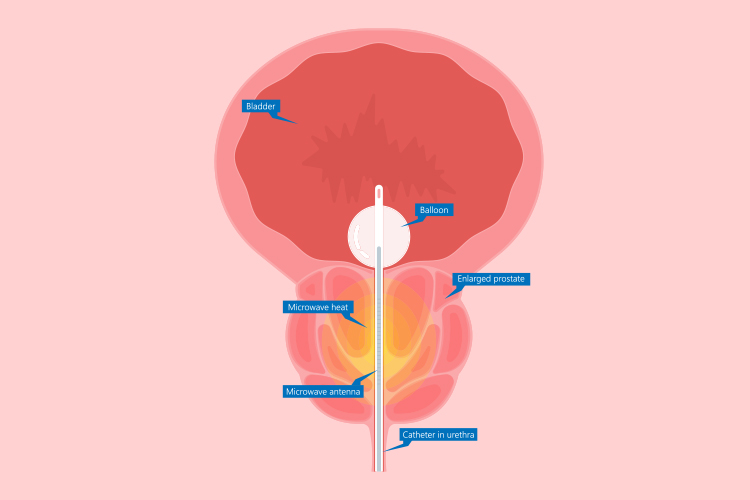What Is Urethral Stricture and When Is Surgery Needed?
2025-04-04 / RG STONE HOSPITAL / Urological Treatment

The urinary system depends on the urethra because it serves as the passage for urine to flow from bladder to external release. Some health conditions interrupt the normal functioning of the urethra thereby producing unwanted obstacles for patients. Urethral stricture stands as a medical problem because it creates a limited flow of urine through the urethra. This blog examines the origins of urethral stricture and its symptoms and treatment choices with urethral stricture surgery as well as providing guidelines about seeking medical help.
What Is Urethral Stricture?
Narrowing of the urethral canal develops because of scar tissue and swelling which occurs due to inflammation. When untreated urethral stricture develops it obstructs the urine flow preventing normal urination and producing hazardous complications. Men develop this condition more frequently than women because of the different structures of their urinary tracts.
Causes of Urethral Stricture
Multiple elements exist which facilitate the development of urethral stricture among patients:
Infections: Prolonged infections with UTIs or STIs create inflammation which results in urethral scarring.
Trauma or Injury: The urinary tract injuries and pelvic fractures together with catheter insertions alongside previous urinary tract surgeries create conditions that form scar tissue.
Congenital Conditions: Natural congenital conditions result in some people being born with an abnormally small urethra.
Inflammatory Conditions: The skin disease lichen sclerosus together with other inflammatory conditions can cause tightening of the urethra.
Radiation Therapy: The application of radiation therapy to treat pelvic cancers might lead to scarring in the urethra.
Symptoms of Urethral Stricture
The extent of narrowing inside a urethra becomes the primary factor that determines symptom intensity. Common signs include:
-
Weak or slow urine flow
-
Difficulty starting urination
-
Frequent urination or urgency
-
Pain or burning sensation while urinating
-
Urinary tract infections
-
Incomplete emptying of the bladder
-
Blood in the urine (hematuria)
The lack of treatment for urethral stricture causes bladder damage that progresses to kidney issues before requiring emergency medical assistance for severe urinary retention.
When Is Urethral Stricture Surgery Needed?
Medical professionals treat simple urethral strictures with treatment adjustments along with minimal intervention procedures. The treatment of urethral stricture through surgical intervention becomes necessary when one or more of the following factors apply: severe stricture length or stricture complications that impact quality of life or treatment failure of non-treatment methods.
-
A long and serious urethral stricture reaches at least one centimeter in length.
-
The symptoms from the condition lead to major life-quality deterioration for patients.
-
The patient experiences multiple urinary infections together with bladder system problems which requires hospitalization.
-
Non-surgical treatments such as dilation or catheterization fail
Types of Urethral Stricture Surgery
All surgical approaches to urethral stricture treatment rely on both the distance of the stricture from the penis and its degree of severity.
-
Urethral Dilation
-
The procedure involves minimum invasiveness because specialists stretch the urethra with special tools.
-
Temporary relief but high recurrence rates.
-
Internal Urethrotomy (Optical Urethrotomy)
-
The stricture area receives an incision through either laser or scalpal cutting to make the urethra broader.
-
The treatment shows effectiveness for brief urethral constriction yet the procedure needs to be repeated.
-
Urethroplasty
-
The excessive tissue removal or application of grafts from other body parts makes up a reconstructive surgical procedure.
-
Urethroplasty constitutes the most effective approach for achieving enduring treatment success.
-
Stent Placement
-
A tiny tube preserves the urethra opening through insertion.
-
Stents deliver short-term relief to some patients although they sometimes generate distressing outcomes as time passes.
Recovery After Urethral Stricture Surgery
-
Postoperative patient experiences show quick improvement in their urine flow rate.
-
Health recovery benefits from catheter placement that maintains its presence during healing for a short duration.
-
Doctor-prescribed pain treatment and antibiotics serve to stop possible infections.
-
Direct postoperative examinations remain essential for checking the recurrence of the condition and possible complications.
Conclusion
Medical intervention during the right time will prevent serious complications from occurring while treating urethral stricture together with its physiological discomforts. Urethral stricture surgery provides lasting treatment benefits to patients who have severe cases or multiple urethral stricture occurrences. Seek medical help from a urologist at RG Hospital when urinary symptoms last continuously because they will provide a proper diagnosis along with tailored treatment options.
Categories
Hernia Repair
Appendicitis
Piles
Urological Treatment
Hernia treatment
Enlarged Prostate (BPH)
Gall Bladder Stone
Urinary / Kidney Stone
Vitamins
Indian Health Care System
Exercise
Obesity
Female Urinary Incontinence
Single Incision Laparoscopic Surgery (SILS)
Kidney Cancer
Bladder Cancer
Ovarian cancer
Nephrology
Bariatric Surgery
Kidney Function Test
Female Urology
Radiation Therapy

